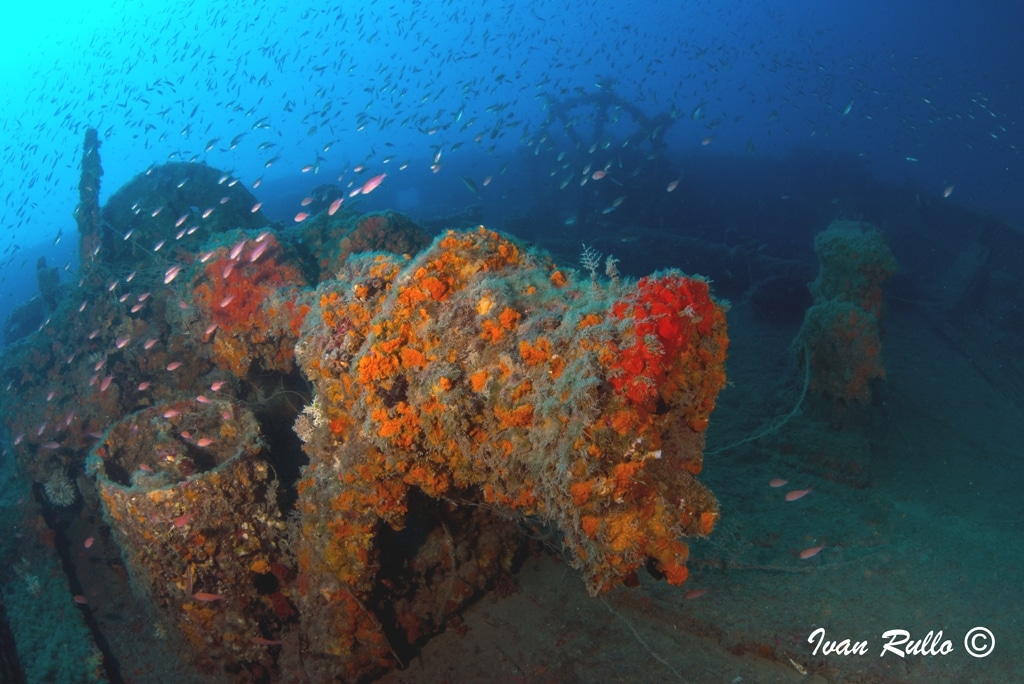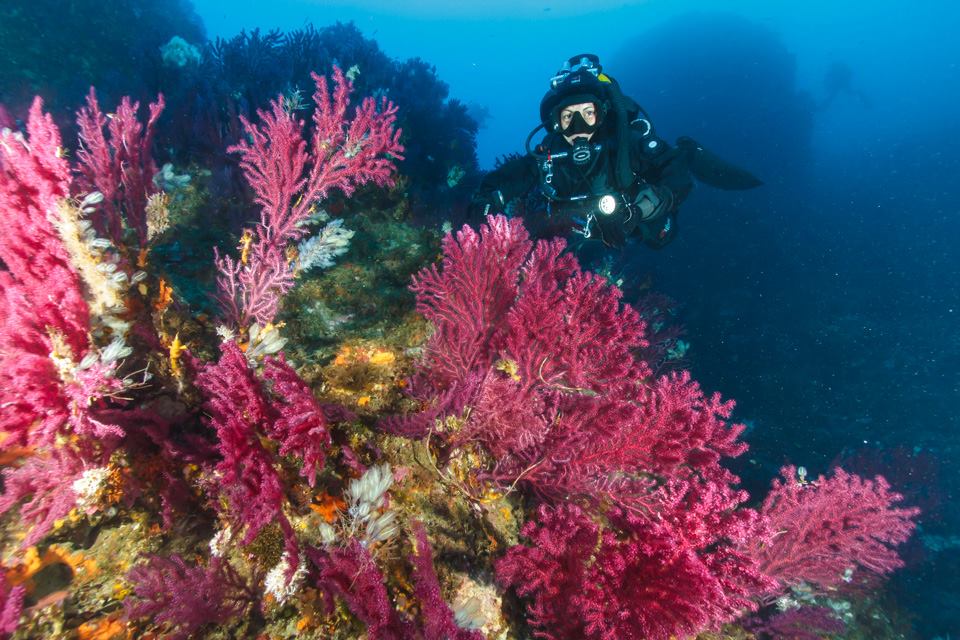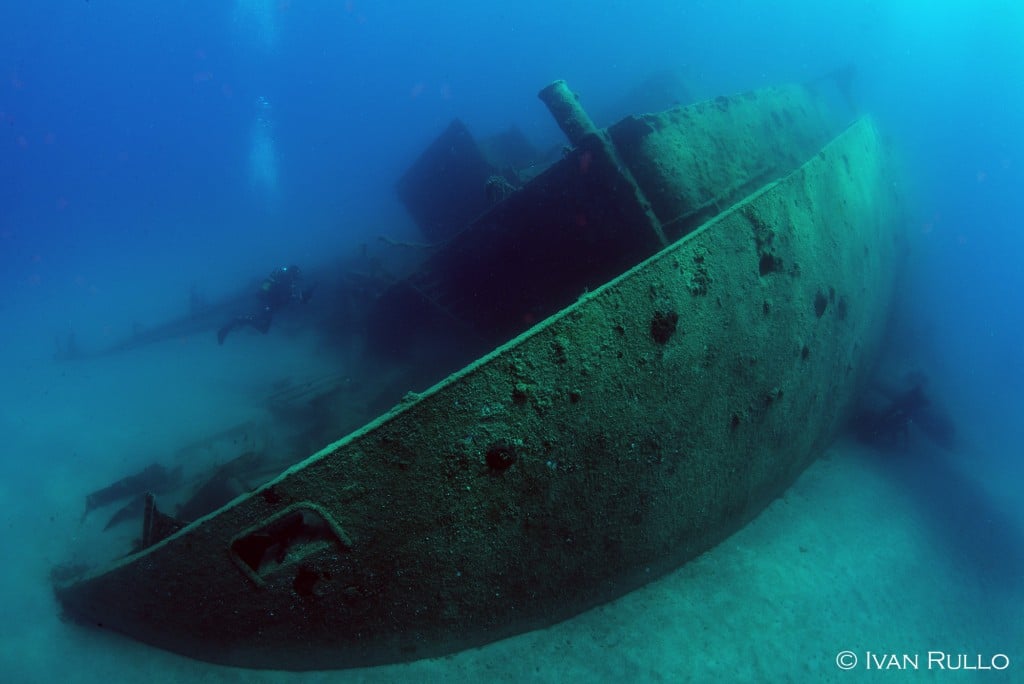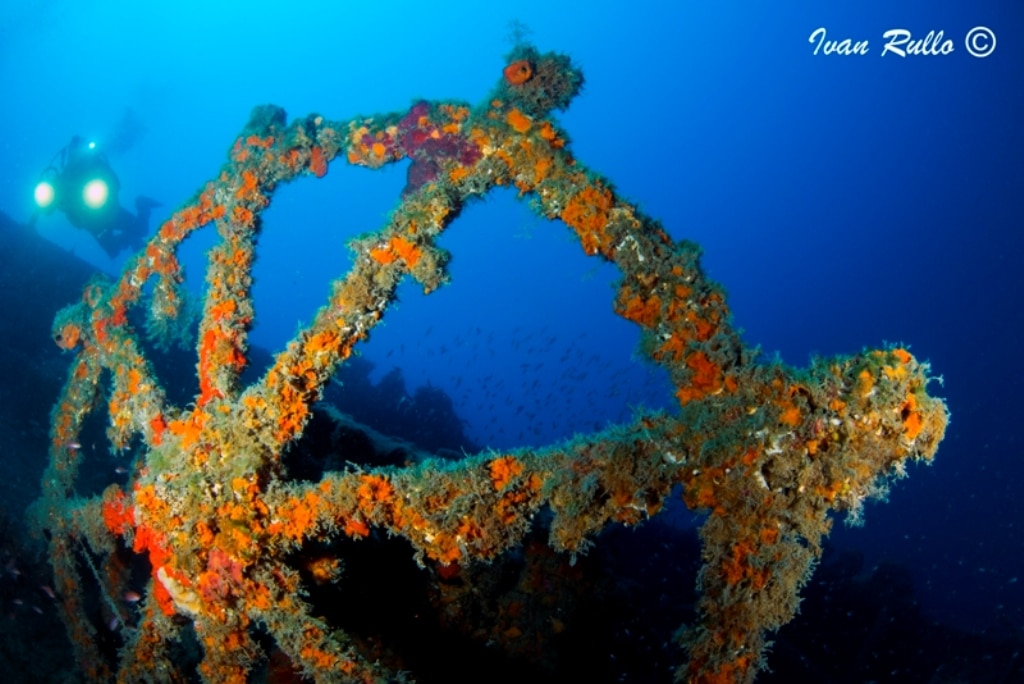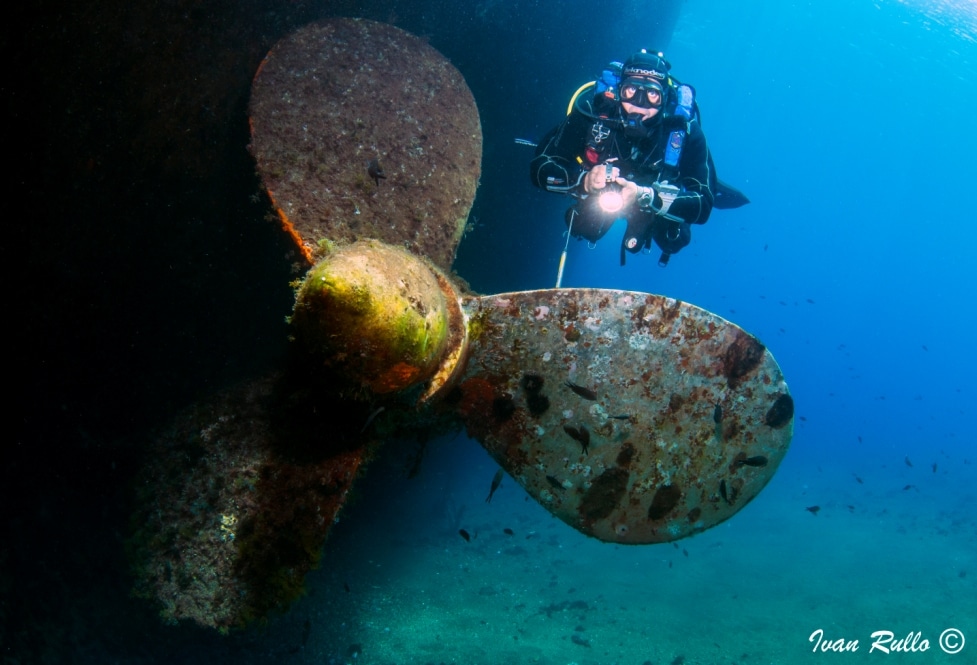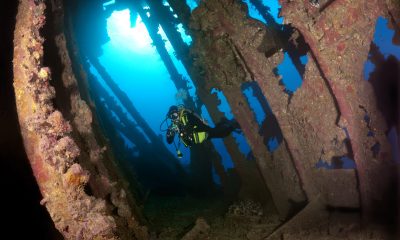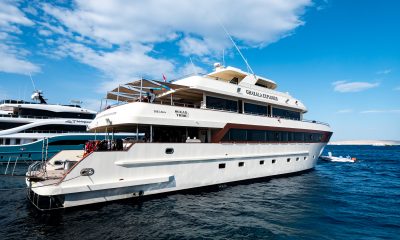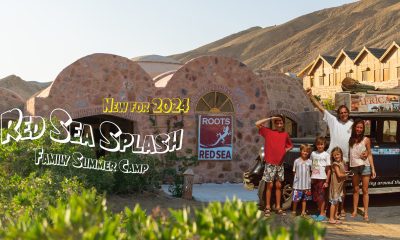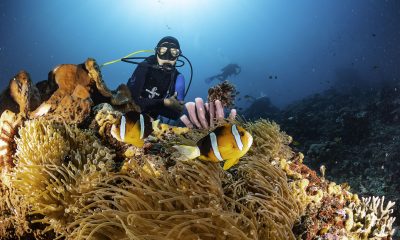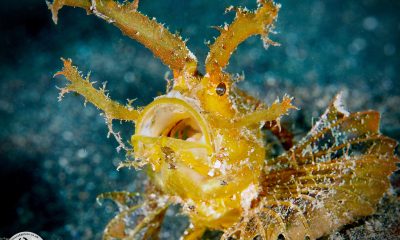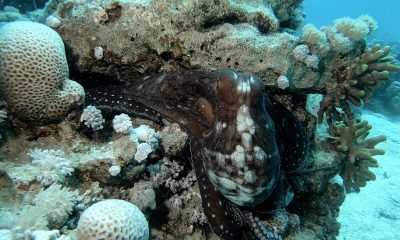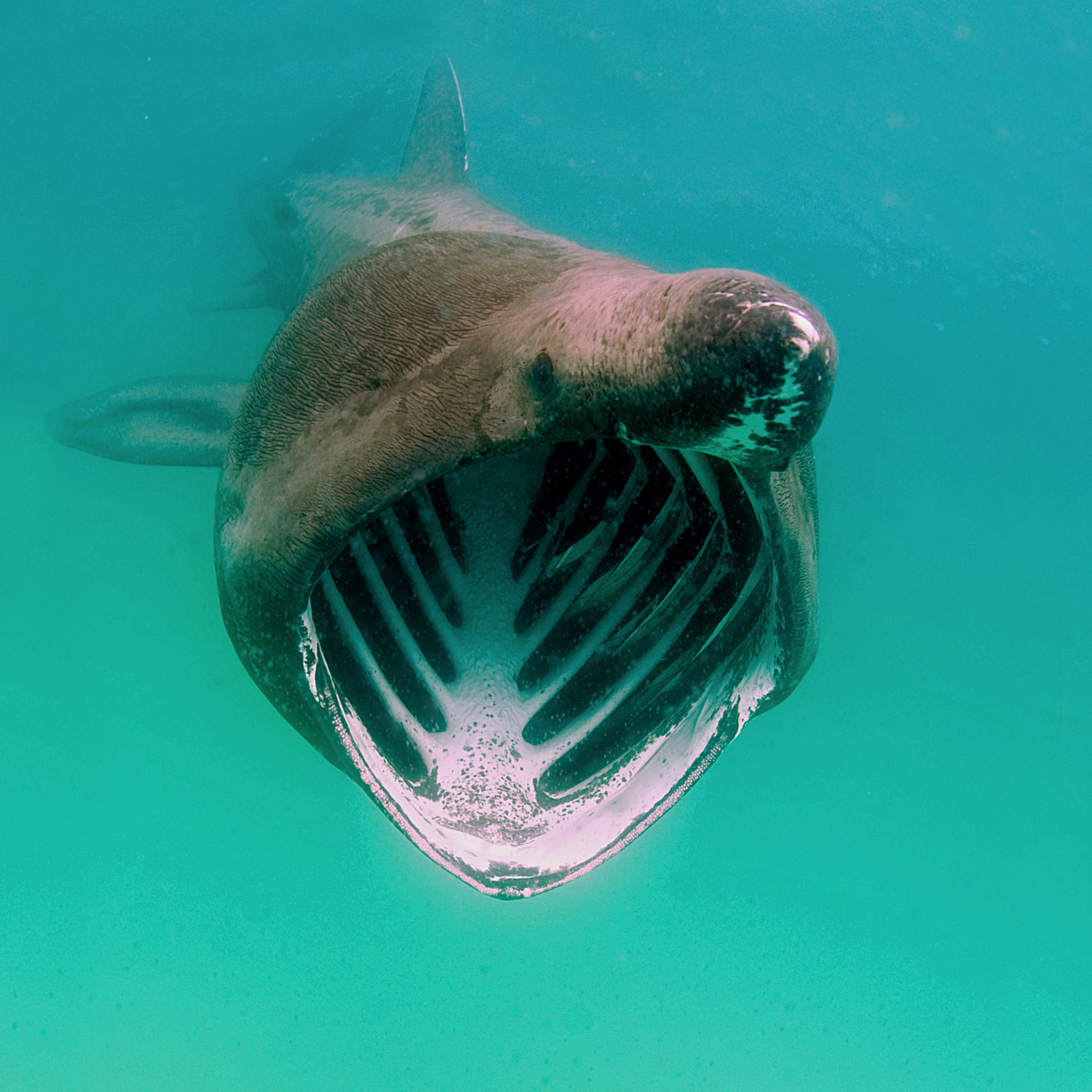News
Diving with… Roberta Eliodoro, Megale Hellas Diving Center, Calabria, Italy
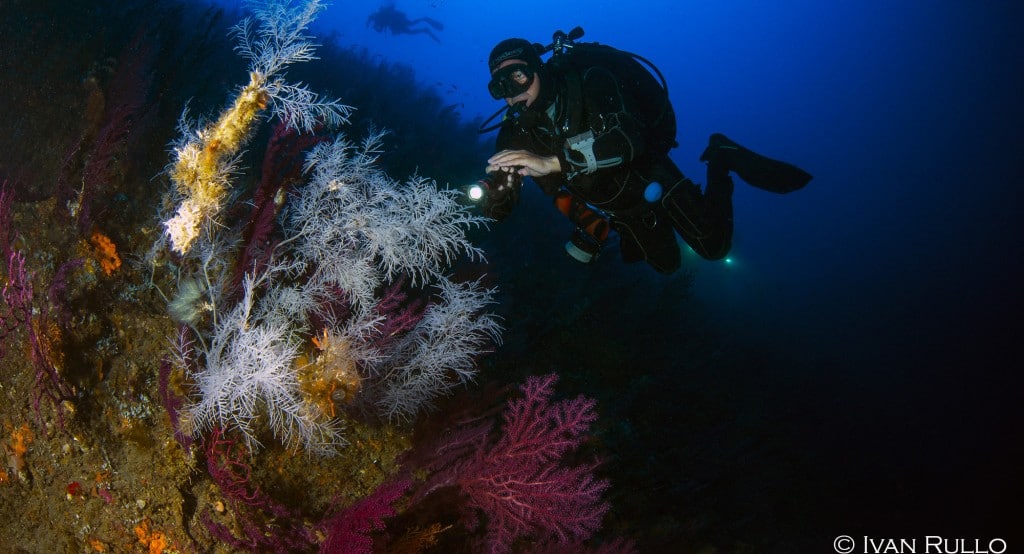
In this ongoing series, we speak to the people who run dive centres, resorts and liveaboards from around the world about their businesses and the diving they have to offer…
Roberta Eliodoro
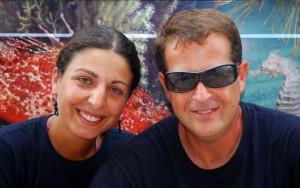 What is the name of your business?
What is the name of your business?
Megale Hellas Diving Center
What is your role within the business?
I’m the owner of the Diving Center and one of the Instructors working at the dive centre.
How long has the business operated for?
Since 2007
How long have you dived for, and what qualification are you?
I have been a diver since 2003 and a dive professional since 2009. I am an SSI Technical Extended Range Trimix Instructor, 2 stars CMAS Instructor and ISDA Trainer.
What is your favorite type of diving?
I love all types of diving but, if I had to choose, I love to look for wildlife and dive sites where there is great biodiversity.
If you could tell people one thing about your business (or maybe more!) to make them want to visit you what would it be?
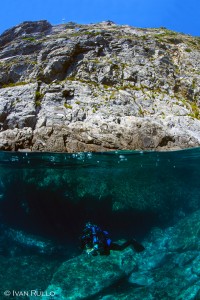 Our Diving Center is located in a little known scuba diving destination, unspoiled, with breathtaking nature and landscapes! We are at the end of the Italian peninsula, in the center of the Mediterranean Sea, in a region characterized by high mountains close to the coastline, with steep sea floors. So, there’s no problem for every kind of diving level, from Open Water to Technical divers!
Our Diving Center is located in a little known scuba diving destination, unspoiled, with breathtaking nature and landscapes! We are at the end of the Italian peninsula, in the center of the Mediterranean Sea, in a region characterized by high mountains close to the coastline, with steep sea floors. So, there’s no problem for every kind of diving level, from Open Water to Technical divers!
Every type of diving can be found here because there are many well preserved wrecks, amazing cliffs and reefs with colourful gorgonians, as well as lots of marine life! Thanks to the beauty and variety of its waters and the unrivaled quality of its sea and weather conditions, Calabria can meet the needs of the most demanding divers.
During a trip with us we usually organise some evening meals in traditional local restaurants with typical Calabrian food and this is a unique experience, because we visit medieval villages where the time seems to have stopped and where it’s possible to breathe the real atmosphere of the ancient Calabria!
I’m an official Guide of Aspromonte National Park and an archaeologist, so I can organize many different kind of guided tours. Our proposal is not a simple dive-package, but a complete holiday for visiting Calabria underwater and inland!
What is your favorite dive in your location and why?
The “Mountain” in Scylla, in the Strait of Messina, I think is one of the most beautiful dive spots of the Mediterranean Sea, famous all over the world for its morphological scenery and for its “forest” of big yellow and red gorgonians (Paramuricea clavata), starting from 25m and deeper. From the bottom, at a depth of 42m, an imposing rock pinnacle rises up to 20m, totally covered by gorgonians, sponges and coelenterates of every kind. And the visibility? Well, thanks to the strong currents which clean the water every 6 hours, the visibility is usually excellent! You are 40m deep and you can see the surface…
What types of diving are available in your location?
Calabria is strategically located in the center of the Mediterranean and is noted for its two seas, the Ionian and the Tyrrhenian, that come together amid the amazing scenery of the Strait of Messina. We have a lot of different diving spots along both the Ionian sea and Tyrrhenian Sea and in some places it’s possible to dive from 0 to 70m in the same place!
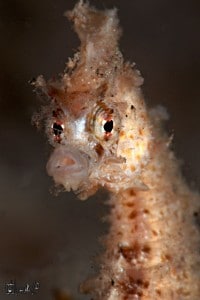 Along the western coast, there is amazing biodiversity, with red and yellow big gorgonians, as well as small, well-hidden creatures like seahorses. Along the eastern coastline, a lot of history is waiting to be discovered. One of our diving packages is, in fact, “The Tour of the Shipwrecks” along the route taken by the shipping convoys during the Second World War. The sea beds of the province of Reggio Calabria reveal more than 20 historical wrecks, with many others still waiting to be explored. These wrecks, often well preserved, represent an important historical heritage as well as being tourist attractions and nature reserves. Comprising patrol boats, freighters, submarines, ferry boats and tankers, each of these wrecks, whether military or commercial, has its own story.
Along the western coast, there is amazing biodiversity, with red and yellow big gorgonians, as well as small, well-hidden creatures like seahorses. Along the eastern coastline, a lot of history is waiting to be discovered. One of our diving packages is, in fact, “The Tour of the Shipwrecks” along the route taken by the shipping convoys during the Second World War. The sea beds of the province of Reggio Calabria reveal more than 20 historical wrecks, with many others still waiting to be explored. These wrecks, often well preserved, represent an important historical heritage as well as being tourist attractions and nature reserves. Comprising patrol boats, freighters, submarines, ferry boats and tankers, each of these wrecks, whether military or commercial, has its own story.
Nowadays, 70 years after their sinking, all of the wrecks have become an oasis of biodiversity, hosting sponges, various species of coral, and colorful fish that take advantage of a well protected hiding place.
What do you find most rewarding about your current role?
I love my job and I’m very gratified by the delighted and surprised faces of the people who come to visit us and don’t expect to find the amazing nature and history we have underwater and inland. I’m an official Guide of the Aspromonte National Park and I enjoy to take care of my guests in every aspect of their vacation in Calabria!
What is your favorite underwater creature?
I love seahorses! It was the first small creature I saw underwater, many years ago, during my Open Water course. Now, in front of my diving center, there is a a sedentary colony of seahorses, including examples of both species found in Italy (Hippocampus hippocampus and Hippocampus guttulatus). They can be found from 5m to 40m deep.
Are there any exciting changes / developments coming up in the near future?
We are conducting some research along the Ionian coastline looking for new shipwrecks. We have had some information from local fisherman and so now we are looking for the exact locations. We know, by historical information, that there are more than 20 shipwrecks of the past century, which are waiting to be discovered in our area.
As a center what is the biggest problem you face at the moment?
We do not have many competitors who are organized like us in our region, but there are many freelance instructors and associations, who call themselves “diving centers” but are not professional. They offer lower prices but often the standards are really lacking in safety for the divers. More often, they promise over the internet things that they are not able to organize. Many divers who dive with them first, soon then switch to diving with us. This is the biggest problem that affects the image in the area where we operate.
Is your center involved in any environmental work?
We work a lot for environmental awareness, especially with kids. I organize regular courses in marine biology and environmental education. Furthermore, I work for the preservation of the underwater archaeological heritage and I organize every year, in July, a Summer Fieldwork of Underwater Archaeology open to everybody.
How do you see the SCUBA / Freediving / snorkeling industry overall? What changes would you make?
The scuba diving industry is for sure increasing, but two things are very important to me: to boost sustainable tourism and to check and verify the standards of the companies that operate in this field.
What would you say to our visitors to promote the diving you have to offer?
We operate in an area naturally predisposed to welcome those who love the sea, the nature and variety of the landscapes, rich in archaeological vestiges and seafaring traditions. Here, in the heart of the Mediterranean, the staff of Megale Hellas Diving help you discover the unspoiled Sea of Calabria, along all three of its coastlines: along the shores of the Ionian, along the cliffs of the Tyrrhenian “Violet Coast” and in the Straits of Messina, which hosts the “Mountain” of Scylla, considered one of the 10 most beautiful reefs in Italy.
The territory is still mostly unknown by international divers but, thanks to the beauty and variety of its waters, and the unrivaled quality of its sea and the good weather conditions, Calabria can meet the needs of the most demanding scuba divers. Furthermore, a vacation with us will be not a simply diving holiday, but a complete travel experience, thanks to the excursions we will provide, the good food you’ll taste, and the deep hospitality you’ll find here!
Where can our visitors find out more about your business?
Visit our multilingual website www.megalehellas.net
E-mail us at info@megalehellas.net
Stay in contact with us on Facebook https://www.facebook.com/diving.megalehellas.7
Instagram https://www.instagram.com/diving.megalehellas
Call me on +39 329.4640045.
Blogs
Northern Red Sea Reefs and Wrecks Trip Report, Part 2: Wall to Wall Wrecks
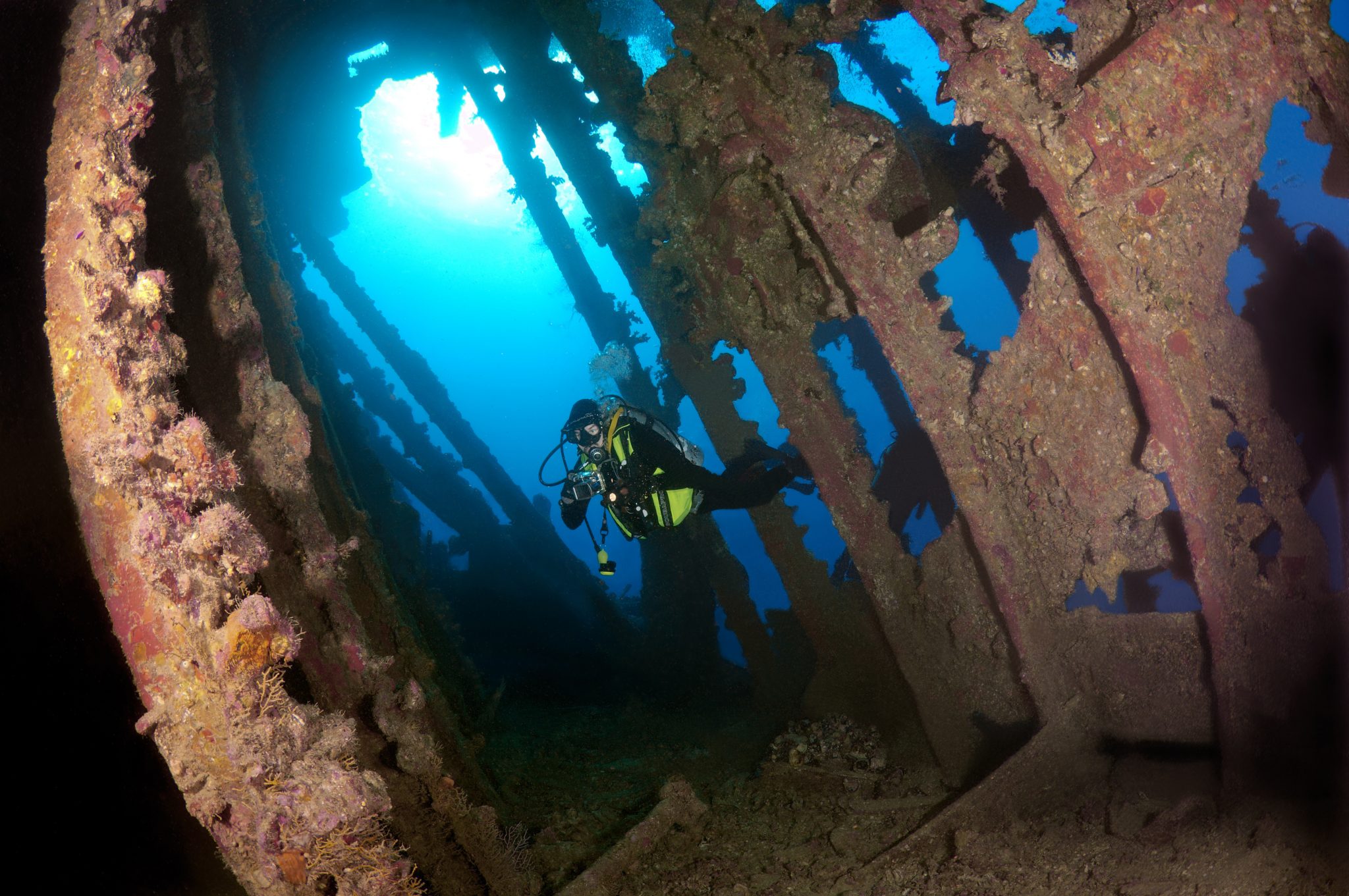
Jake Davies boards Ghazala Explorer for an unforgettable Red Sea diving experience…
The second day’s diving was a day full of wreck diving at Abu Nuhas, which included the Chrisoula K, Carnatic, and Ghiannis D. The first dive of the day was onto the Chrisoula K, also known as the wreck of tiles. The 98m vessel remains largely intact where she was loaded with tiles which can be seen throughout the hold. The stern sits at 26m and the bow just below the surface. One of the highlights of the wreck is heading inside and seeing the workroom where the machinery used for cutting the tiles are perfectly intact. The bow provided some relaxing scenery as the bright sunlight highlighted the colours of the soft coral reef and the many reef fish.
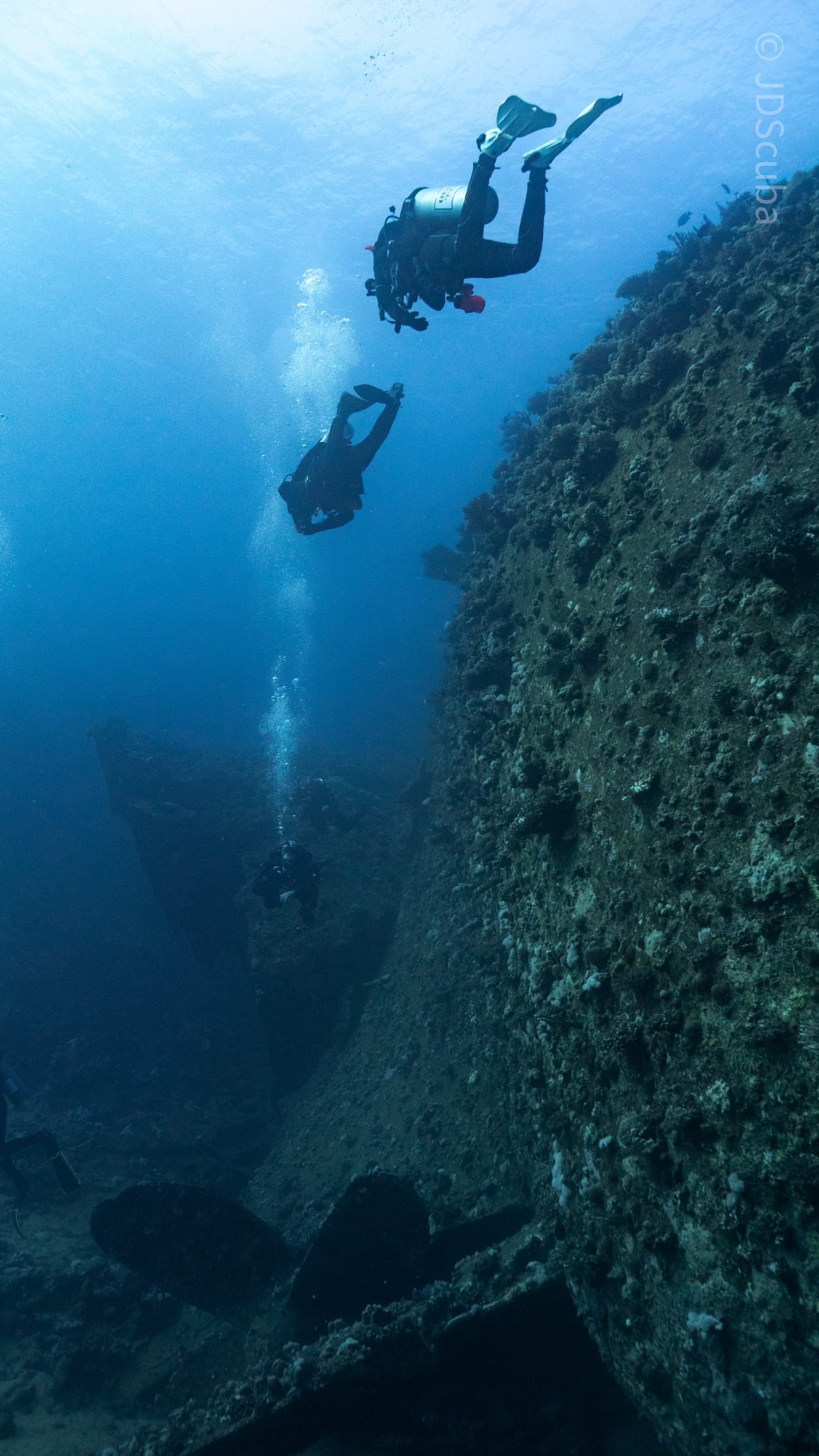
Following breakfast, we then headed to the next wreck, which was the Carnatic. The Carnatic is an 89.9m sail steamer vessel that was built in Britain back in 1862. She ran aground on the reef back in 1869 and remains at 27m. At the time, she was carrying a range of items, including 40,000 sterling in gold. An impressive wreck where much of the superstructure remains, and the two large masts lay on the seafloor. The wooden ribs of the hull provide structures for lots of soft corals, and into the stern section, the light beams through, bouncing off the large shoals of glass fish that can be found using the structure as shelter from the larger predators that are found outside of the wreck.
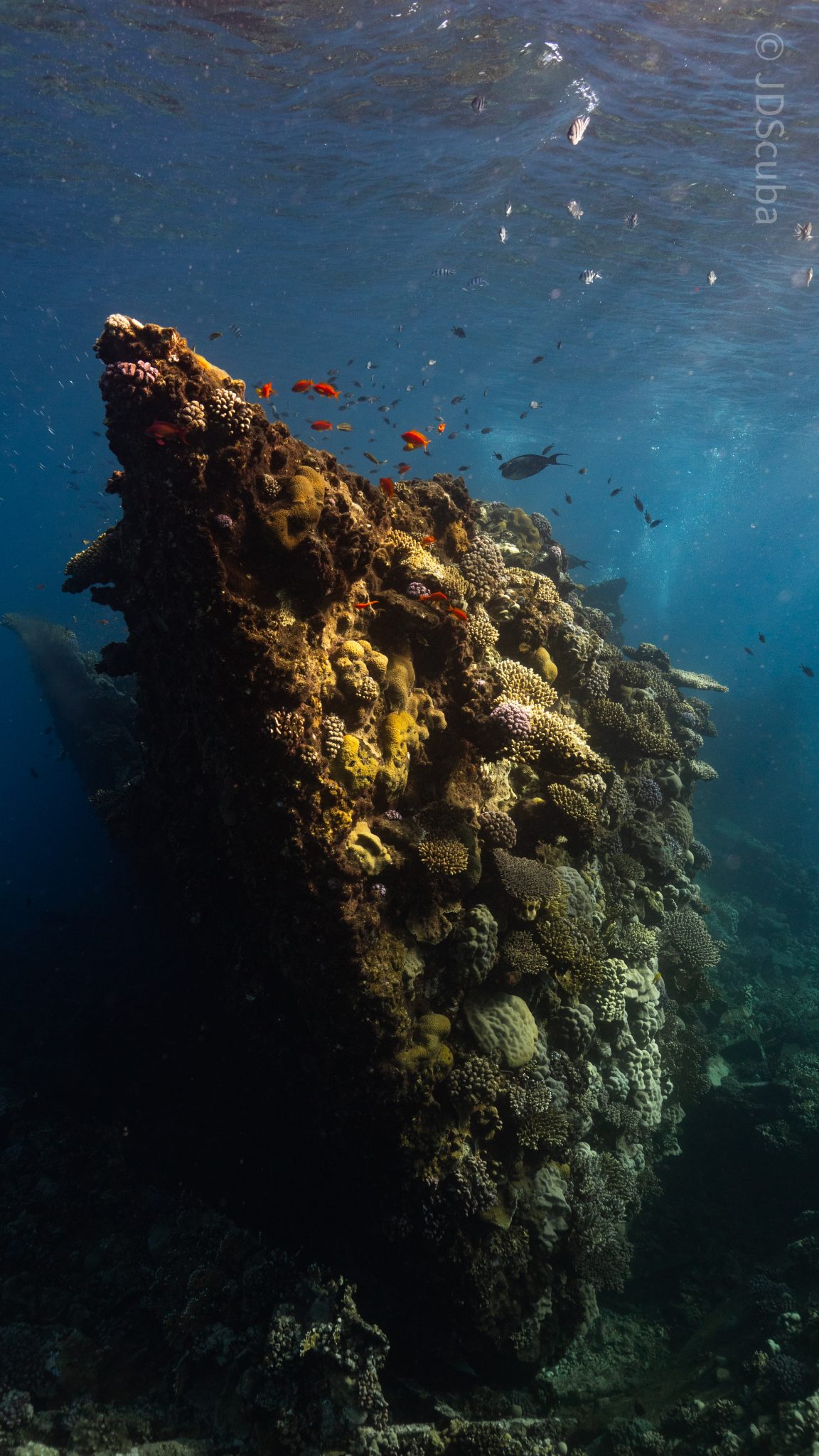
The final wreck at Abu Nuhas was the Ghiannis D, originally called ‘Shoyo Maru,’ which was 99.5m long and built in Japan back in 1969 before becoming a Greek-registered cargo ship in 1980. The ship then ran aground on the reef on April 19th, 1983, and now sits at the bottom at a depth of 27m. Heading down the line, the stern of the ship remains in good condition compared to the rest of the hull. The highlight of the wreck, though, is heading into the stern section and down the flights of stairs to enter the engine room, which remains in good condition and is definitely worth exploring. After exploring the interior section of the ship, we then headed over to see the rest of the superstructure, where it’s particularly interesting to see the large table corals that have grown at the bow relatively quickly considering the date the ship sank. After surfacing and enjoying some afternoon snacks, we made sure everything was strapped down and secured as we would be heading north and crossing the Gulf of Suez, where the winds were still creating plenty of chop.
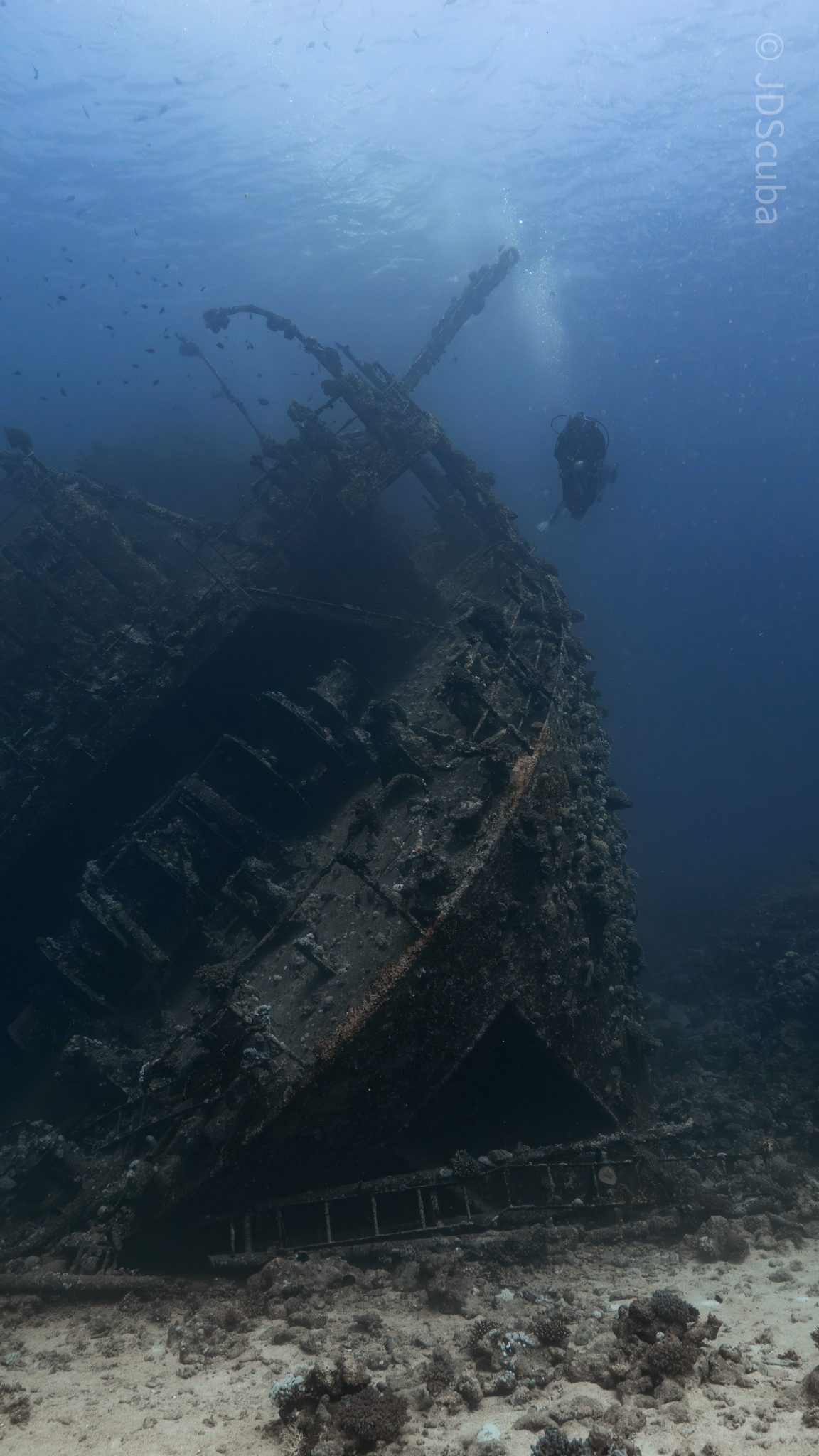
The next morning, it was a short hop to Ras Mohammed Nature Reserve for the next couple of days of diving. The 6am wake-up call came along with the briefing for the first site we would be diving, which was Shark & Yolanda. The low current conditions allowed us to start the dive at Anemone City, where we would drift along the steep, coral-filled wall. These dives involved drifts, as mooring in Ras Mohammed wasn’t allowed to protect the reefs. As a dive site, Shark & Yolanda is well-known and historically had a lot of sharks, but unfortunately not so many in recent years, especially not so early in the season. However, there was always a chance when looking out into the blue.
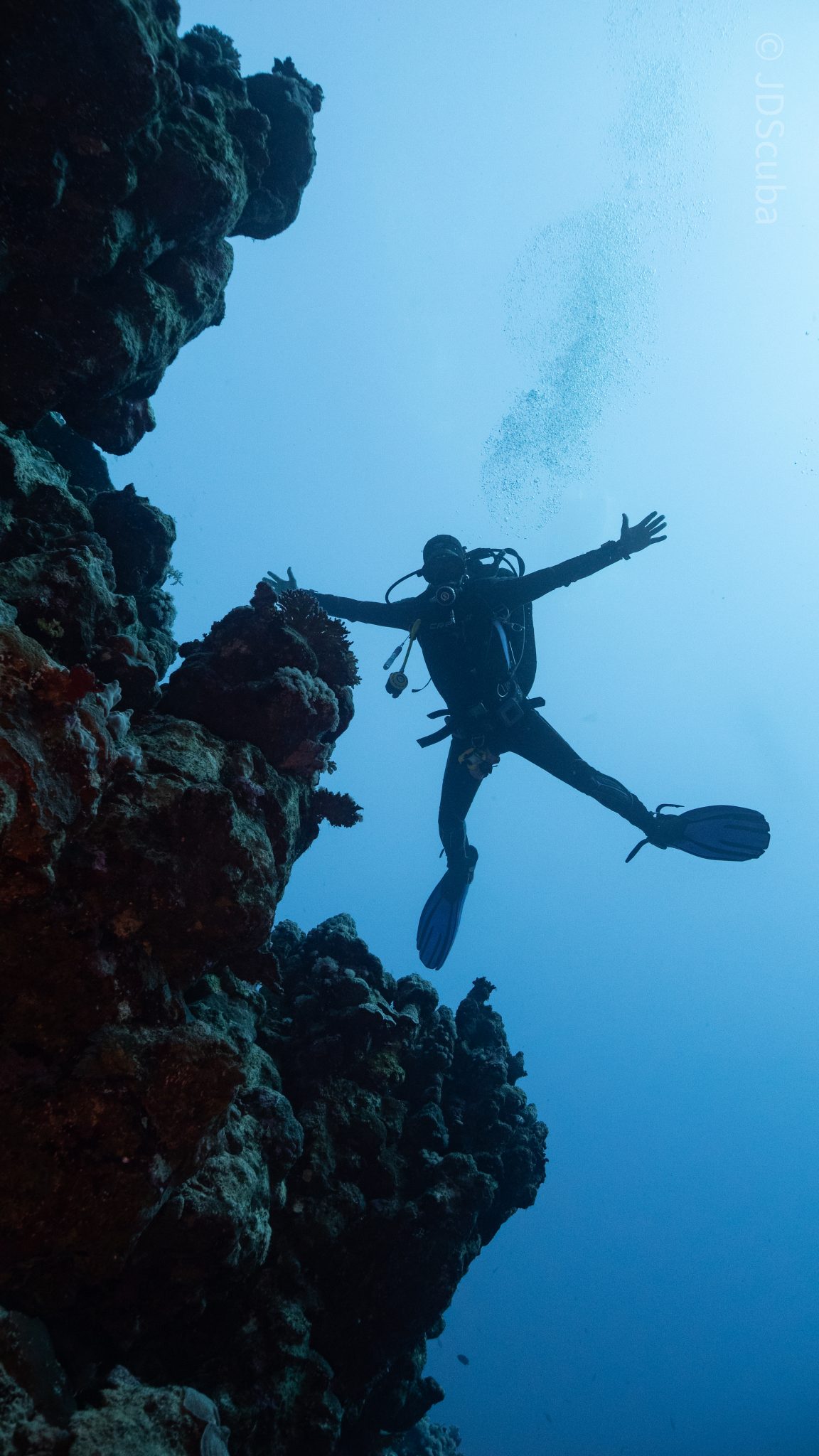
The gentle drift took us along the steep walls of the site, with plenty of anemone fish to be seen and a huge variety of corals. It wasn’t long into the dive before we were accompanied by a hawksbill turtle, who drifted with us between the two atolls before parting ways. Between the two reefs, the shallow patch with parts of coral heads surrounded by sand provided the chance to see a few blue-spotted stingrays that were mainly resting underneath the corals and are always a pleasure to see. With this being the morning dive, the early sunlight lit up the walls, providing tranquil moments. Looking out into the blue, there was very little to be seen, but a small shoal of batfish shimmering underneath the sunlight was a moment to capture as we watched them swim by as they watched us.
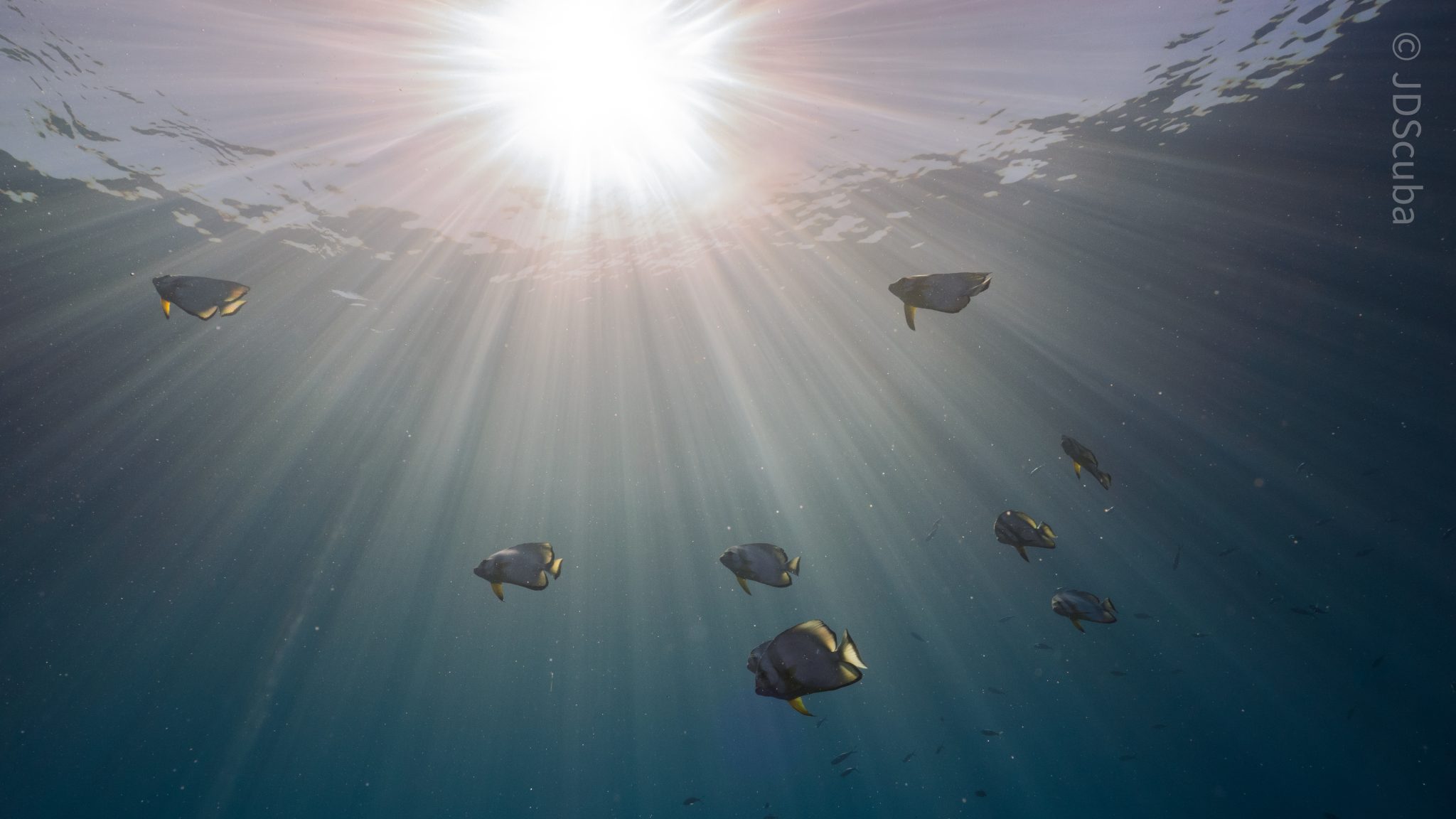
Towards the end of the dive, we stopped at the wreck of the Jolanda where the seafloor was scattered with toilets from the containers it was carrying. This provided a unique site to make a safety stop, which was also accompanied by a large barracuda slowly swimming by, along with a hawksbill turtle calmly swimming over the reef as the sun rays danced in the distance.
For the next dive, we headed north to the Strait of Tiran to explore the reefs situated between Tiran Island and Sharm El Sheik, which were named after the British divers who had found them. We started on Jackson before heading to Gordons Reef, where we also did the night dive. All the atolls at these sites provided stunning, bustling coral reefs close to the surface and steep walls to swim along, which always provided the opportunity to keep an eye out for some of the larger species that can be seen in the blue. Midwater around Jackson Reef was filled with red-toothed triggerfish and shoals of banner fish, which at times were so dense that you couldn’t see into the blue. Moments went by peacefully as we enjoyed the slow drift above the reef, watching these shoals swim around under the mid-afternoon sun.
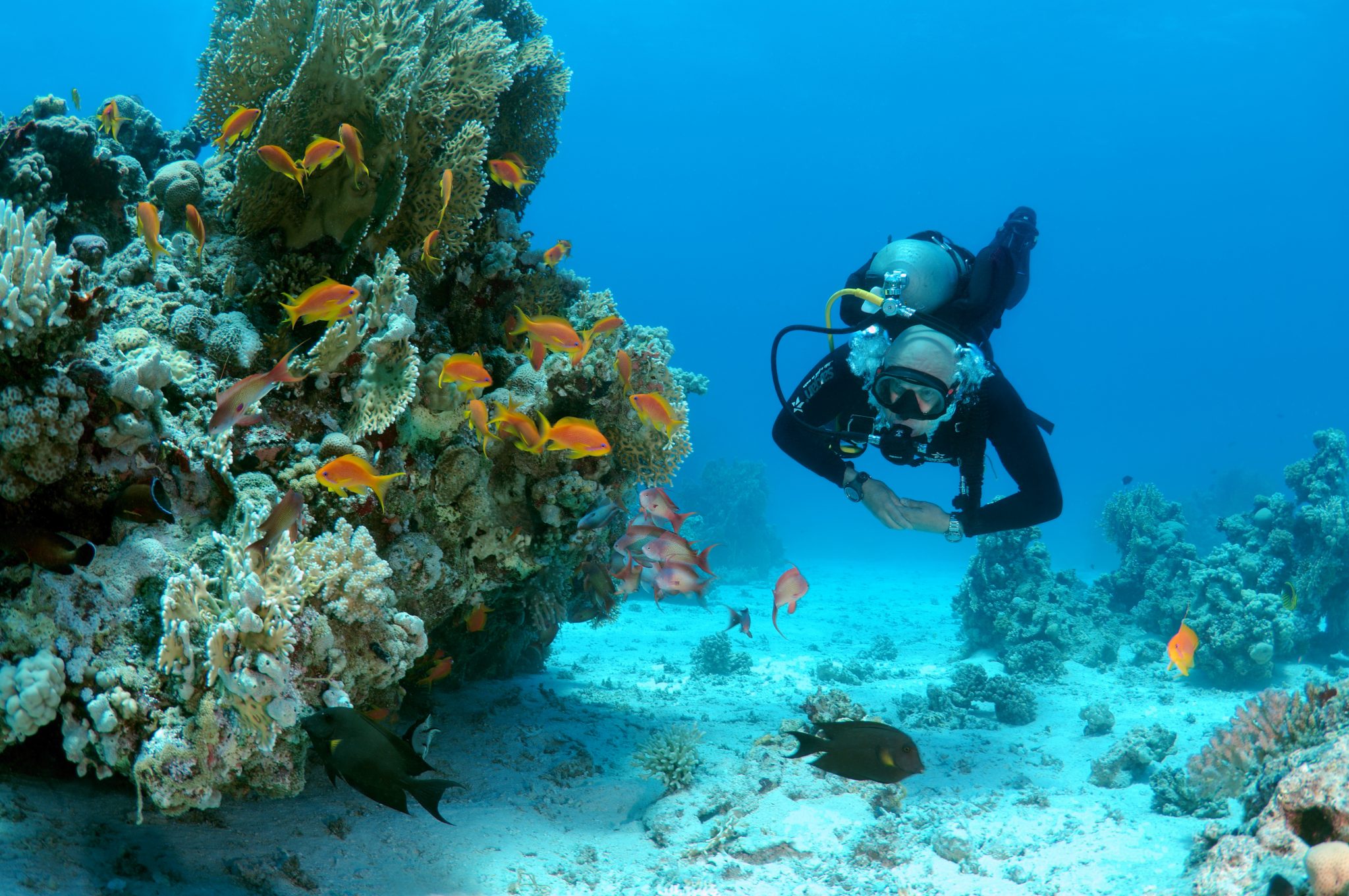
The night dive at Gordon’s Reef was mainly among the stacks of corals surrounded by sand, which was great to explore under the darkness. After some time circling the corals, we came across what we were really hoping to find, and that was an octopus hunting on the reef. We spent the majority of the dive just watching it crawl among the reef, blending into its changing surroundings through changes in colour and skin texture. It’s always so fascinating and captivating to watch these incredibly intelligent animals, in awe of their ability to carry out these physical changes to perfectly blend into the reef. Before we knew it, it was time to head back to the boat to enjoy a well-deserved tasty dinner prepared by the talented chefs onboard.
Check in for the 3rd and final part of this series from Jake tomorrow!
To find out more about the Northern Red Sea reef and wrecks itineraries aboard Ghazala Explorer, or to book, contact Scuba Travel now:
Email: dive@scubatravel.com
Tel: +44 (0)1483 411590
Photos: Jake Davies / Avalon.Red
Marine Life & Conservation
Double Bubble for Basking Sharks
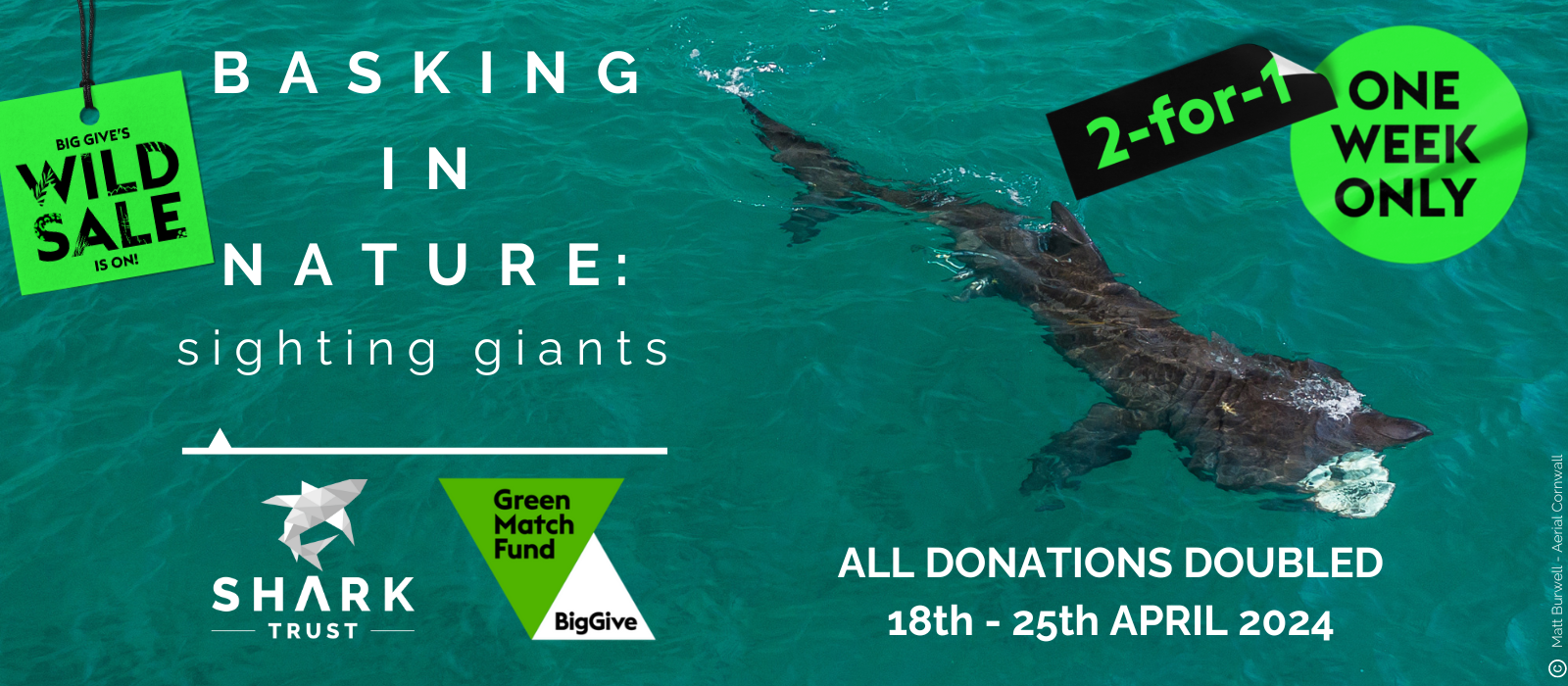
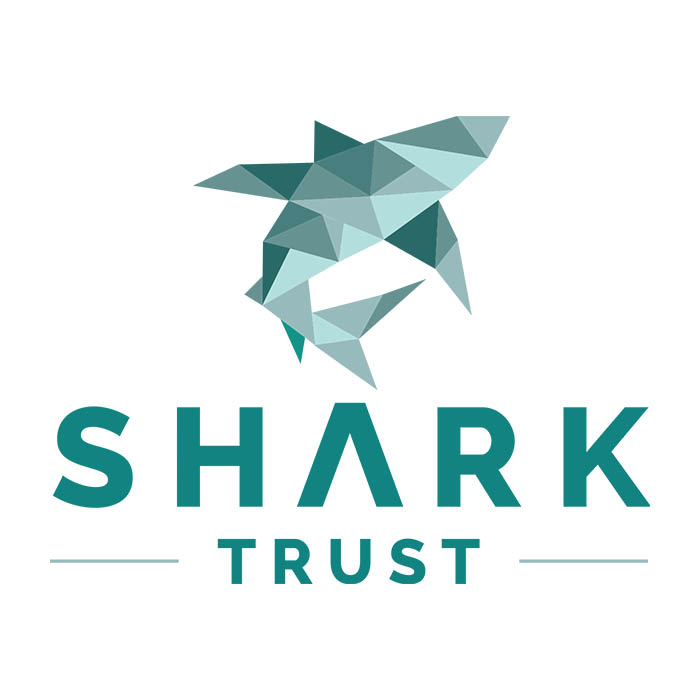 The Shark Trust is excited to announce that, for two more days only, all donations, large or small, will be doubled in the Big Give Green Match Fund!
The Shark Trust is excited to announce that, for two more days only, all donations, large or small, will be doubled in the Big Give Green Match Fund!
Donate to Basking in Nature: Sighting Giants
The Shark Trust is hoping to raise £10k which will be doubled to £20k. This will go towards Basking in Nature: Sighting Giants. And they need YOUR help to reach they’re goal.
The Shark Trust’s citizen science project is to monitor and assess basking sharks through sightings; encouraging data collection, community engagement, and promoting nature accessibility. This initiative aims to enhance health and wellbeing by fostering a deeper connection with British Sharks.
Campaign Aims
- Increase citizen science reporting of Basking Sharks and other shark sightings to help inform shark and ray conservation.
- Provide educational talks about the diverse range of sharks and rays in British waters and accessible identification guides!
- Create engaging and fun information panels on how to ID the amazing sharks and rays we have on our doorstep! These can be used on coastal paths around the Southwest. With activities and information on how you can make a difference for sharks and rays!
- Promote mental wellbeing through increasing time in nature and discovering the wonders beneath the waves!
Donate, and double your impact. Click Here
-
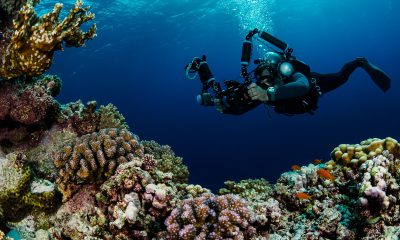
 News3 months ago
News3 months agoHone your underwater photography skills with Alphamarine Photography at Red Sea Diving Safari in March
-
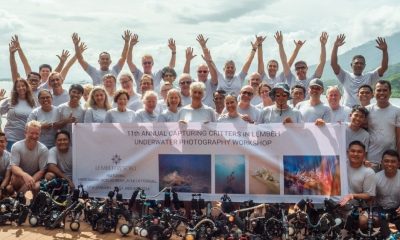
 News3 months ago
News3 months agoCapturing Critters in Lembeh Underwater Photography Workshop 2024: Event Roundup
-
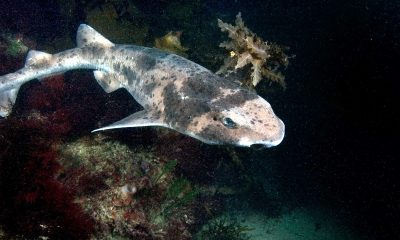
 Marine Life & Conservation Blogs2 months ago
Marine Life & Conservation Blogs2 months agoCreature Feature: Swell Sharks
-
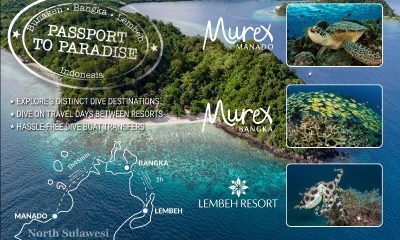
 Blogs2 months ago
Blogs2 months agoMurex Resorts: Passport to Paradise!
-
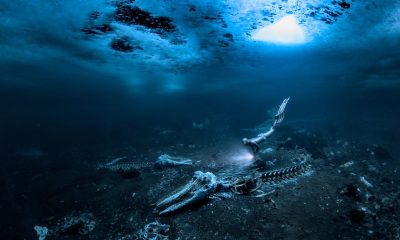
 Blogs2 months ago
Blogs2 months agoDiver Discovering Whale Skeletons Beneath Ice Judged World’s Best Underwater Photograph
-
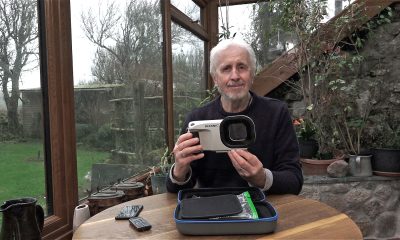
 Gear Reviews2 months ago
Gear Reviews2 months agoGear Review: Oceanic+ Dive Housing for iPhone
-
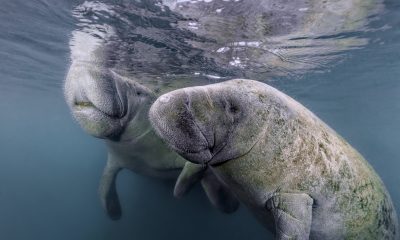
 Marine Life & Conservation2 months ago
Marine Life & Conservation2 months agoSave the Manatee Club launches brand new webcams at Silver Springs State Park, Florida
-
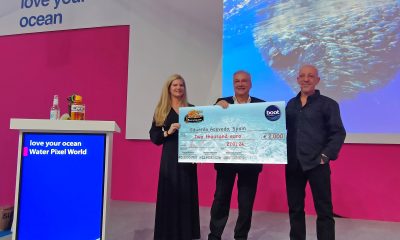
 News3 months ago
News3 months agoWorld’s Best Underwater Photographers Unveil Breathtaking Images at World Shootout 2023


